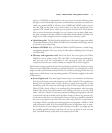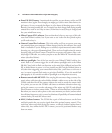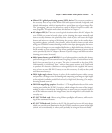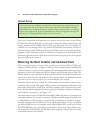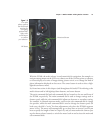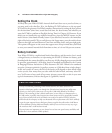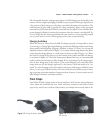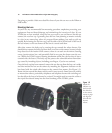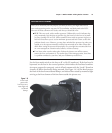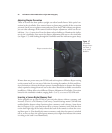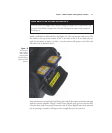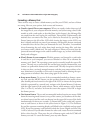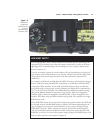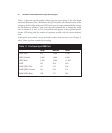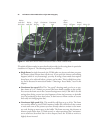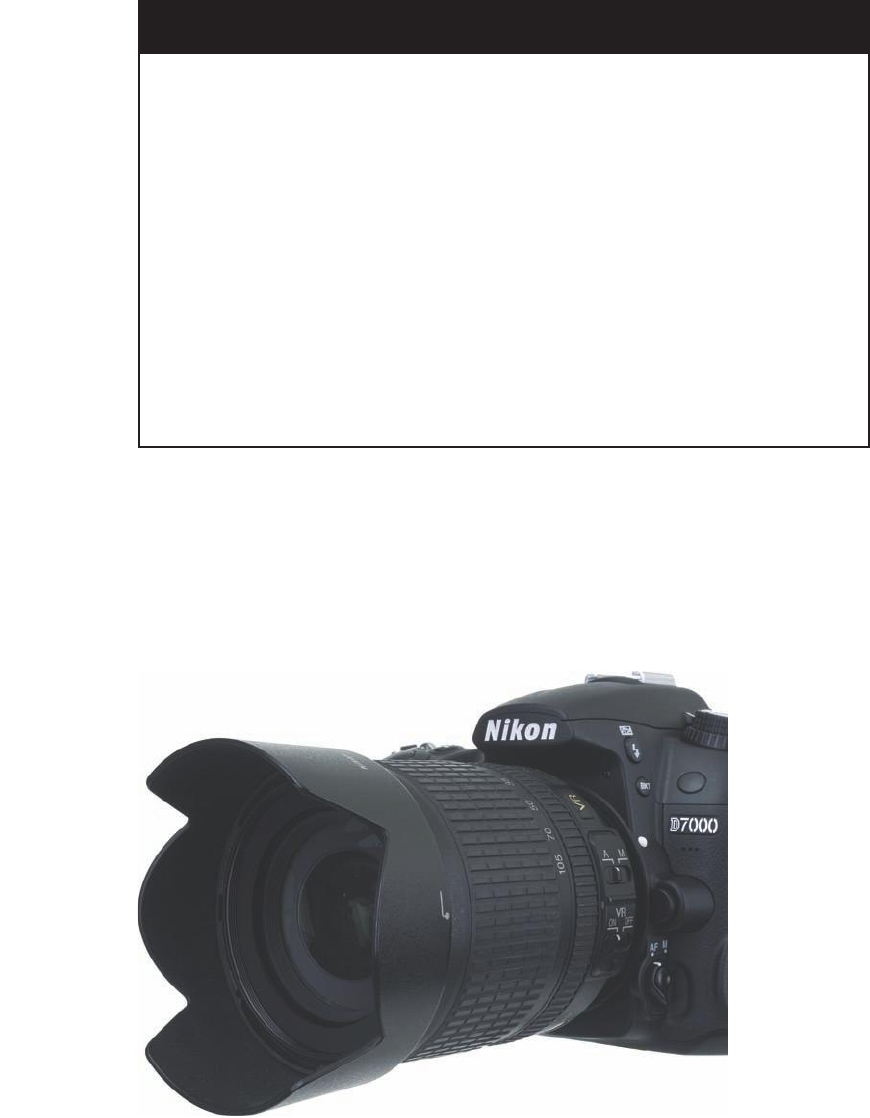
Chapter 1 ■ Nikon D7000: Thinking Outside of the Box 19
DEALING WITH ERRORS
After you’ve mounted your lens properly (or think you have), you might find various
error codes appearing on the top-panel LCD, viewfinder, and back-panel color LCD.
Here are the most common error codes, and what you should do next:
■ FE E. This error code, with a smaller uppercase F followed by two Es indicates that
you’ve mounted a lens that has an aperture ring, but haven’t set the lens to its small-
est f/stop (usually f/22 or f/32). Nikon autofocus lenses with an aperture ring have a
lock lever that allows you to set the minimum aperture and lock it there so that this
problem doesn’t occur. However, you may have unlocked the aperture ring when you
needed to set the aperture manually with the lens mounted on an older camera that
didn’t allow setting the aperture electronically. Or, you might have mounted the lens
on a non-autoaperture extension tube, bellows, or other accessory.
■ E r r. Some other error has taken place. Release the shutter, turn off the camera,
remove the lens, and remount it. Try another lens. If the message persists, then there
is a problem unrelated to your lens, and your D7000 may need service.
Set the focus mode switch on the lens to AF or M-AF (autofocus). If the lens hood is
bayoneted on the lens in the reversed position (which makes the lens/hood combina-
tion more compact for transport), twist it off and remount with the “petals” (found on
virtually all Nikon lens hoods) facing outward. (See Figure 1.6.) A lens hood protects
the front of the lens from accidental bumps, and reduces flare caused by extraneous light
arriving at the front element of the lens from outside the picture area.
Figure 1.6
A lens hood
protects the
lens from extra-
neous light and
accidental
bumps.



